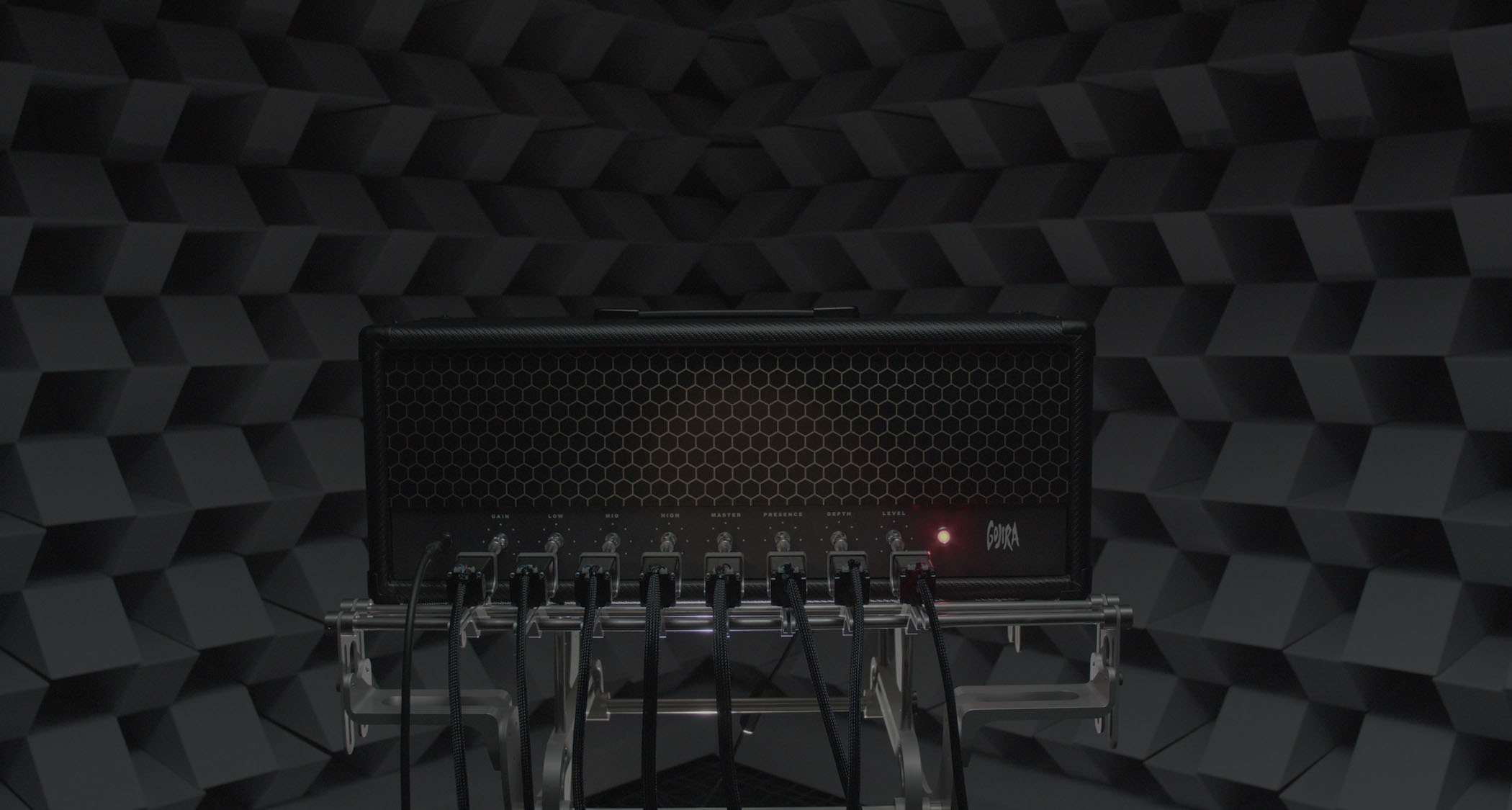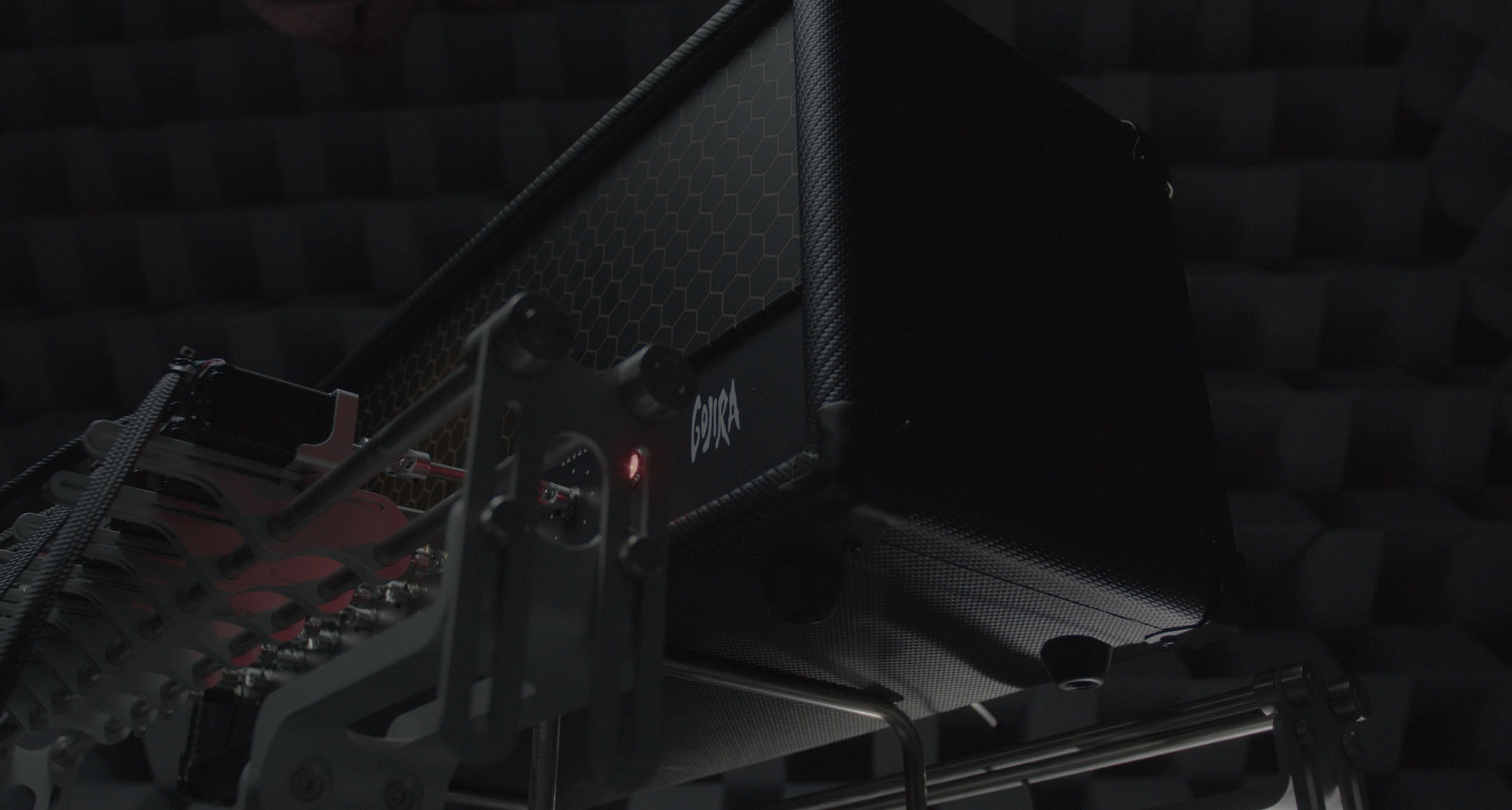
This is the year 2024 so of course we are used to seeing innovations in the amp modelling space and all kinds of innovations with digital tech expanding the functionality of tube amps, but now and again something comes along to stop us in our tracks, and Neural DSP’s TINA, which has been unveiled today alongside the much-anticipated CorOS 3.0.0 Quad Cortex update, is one.
TINA is a robot. The name “TINA” stands for Telemetric Inductive Nodal Actuator, and Neural says it is the first of its kind, designed to revolutionise amp modelling by harnessing the power of machine learning.
TINA’s day job is harvesting data from guitar amplifiers. No need for the humans to lift a finger; the robot has got it covered, its actuator arms physically turning all the dials on the amp’s control panel and recording the output as it goes, then feeding that data back to create the ultimate amp model – one that takes into account all the different combinations of the parameters.
In short, TINA does all the boring bits, turning the knobs recording everything. Applying machine learning to the data collected by TINA, Neural DSP then processes the full range of an amp’s controls into a neural network model, and there you have it, a fully automated modelling process that captures all the nuances of an individual amplifier, its foibles, its sweet spots, its character, its everything. And this, says Neural DSP’s CEO Doug Castro, is a game changer.

“TINA represents a groundbreaking integration of robotics and state-of-the-art machine learning for audio processing, furthering Neural DSP's commitment to redefining the standards in guitar amplifier modeling accuracy,” he says. “We’ve successfully removed all human intervention within the amplifier modeling process – ensuring an unparalleled level of precision in every model by capturing every subtle detail in the amplifier's controls.”
Aleksi Peussa, machine learning team lead and researcher, Neural DSP, describes this approach to modelling as purely data-driven, and that makes for a better model.
“The vast amount of data along with advanced machine learning approaches can systematically push model accuracy to unparalleled levels of realism,” Peussa says. “Our goal is always to create models that are indistinguishable from the real thing, even by experts.”
The development of TINA has already bore fruit for Neural DSP, with the company using it to deliver the much-anticipated CorOS 3.0.0 upgrade for its Quad Cortex amp modeller.
This is officially now available, and means that players will finally be able to run the company’s VST guitar plugins alongside sounds native to the unit and explore all combinations thereof.
Archetype: Plini X and Archetype: Gojira X are the first two plugins to be made compatible, but more will follow in future updates. To celebrate, Neural DSP is giving Quad Cortex users a free plugin from their catalogue upon installing the latest operating system. This promotion runs until 28 August.

Besides plugin compatibility, CorOS 3.0.0 has a suite of updates, including transpose, doubler, transparent blend, monophonic pitch correction, a “circular delay” inspired by the Lexicon PCM-70 and more. For all the details, and to upgrade your Quad Cortex, head over to Neural DSP.







